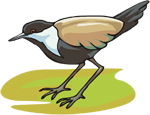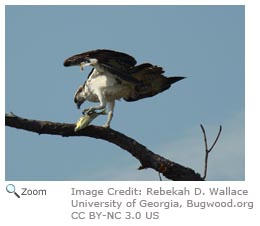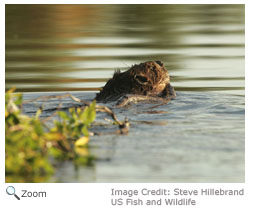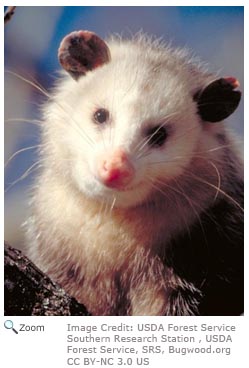Built for Survival
All organisms have adaptations that help them survive and thrive. Some adaptations are structural. Structural adaptations are physical features of an organism, like the bill on a bird or the fur on a bear. Other adaptations are behavioral. Behavioral adaptations are the things organisms do to survive. For example, bird calls and migration are behavioral adaptations.
Evolving and ChangingAdaptations are the result of evolution. Evolution is a change in a species over long periods of time.
Adaptations usually occur because a gene mutates or changes by accident! Some mutations can help an animal or plant survive better than other animals or plants in the species that don't have the mutation.
 For example, imagine a bird species. One day a bird is born with a beak that is longer than the beak of other birds in the species. The longer beak helps the bird catch more food. Because the bird can catch more food, it is healthier than the other birds, and he lives longer and breeds more. The bird passes the gene for a longer beak to his offspring. Birds with the longer beak also live longer and have more offspring, and the gene continues to be inherited generation after generation. For example, imagine a bird species. One day a bird is born with a beak that is longer than the beak of other birds in the species. The longer beak helps the bird catch more food. Because the bird can catch more food, it is healthier than the other birds, and he lives longer and breeds more. The bird passes the gene for a longer beak to his offspring. Birds with the longer beak also live longer and have more offspring, and the gene continues to be inherited generation after generation.
Eventually the longer beak is found in all of the species. This doesn't happen overnight. It can take thousands and thousands of years for a new species to develop.
Over time, animals that are better adapted to their environment survive and breed. Animals that are not well adapted to an environment may not survive. The characteristics that help a species survive in an environment are passed on to future generations. Those characteristics that don't help the species survive slowly disappear.
|
|
Gone Fishing
 The osprey is perfectly adapted for catching fish! It has powerful legs and pale gray feet with sharp talons that help it catch fish. The osprey's feet have rough, pointed scales on them that help the osprey hold onto the fish it catches. Its feet have two toes pointing backwards that also help the osprey grab and hold onto fish. The osprey is perfectly adapted for catching fish! It has powerful legs and pale gray feet with sharp talons that help it catch fish. The osprey's feet have rough, pointed scales on them that help the osprey hold onto the fish it catches. Its feet have two toes pointing backwards that also help the osprey grab and hold onto fish.
Timber!
 Wood plays an important role in a beaver's survival. It is part of its diet and it is used to build the beaver's lodge. The beaver has special adaptations that help it get the most out of the wood in its environment. The beaver has long, sharp upper and lower incisors (teeth) that it uses to cut into trees and woody vegetation. These teeth grow throughout the beaver's life. Even the beaver's large, flat, nearly hairless tail helps. It uses its tail to help maintain its balance when it is gnawing on trees. Most of the beaver's diet is made up of tree bark and cambium. Cambium is the soft tissue that grows under the bark of a tree. The beaver has a specialized digestive system that helps it digest tree bark and cambium. Wood plays an important role in a beaver's survival. It is part of its diet and it is used to build the beaver's lodge. The beaver has special adaptations that help it get the most out of the wood in its environment. The beaver has long, sharp upper and lower incisors (teeth) that it uses to cut into trees and woody vegetation. These teeth grow throughout the beaver's life. Even the beaver's large, flat, nearly hairless tail helps. It uses its tail to help maintain its balance when it is gnawing on trees. Most of the beaver's diet is made up of tree bark and cambium. Cambium is the soft tissue that grows under the bark of a tree. The beaver has a specialized digestive system that helps it digest tree bark and cambium.
Leave Me Alone
 The Virginia opossum has many behavioral adaptations it uses to survive. When threatened, it will exhibit behaviors like running, growling, belching, urinating, and even defecating. Sometimes it will "play" possum" and roll over, become stiff, and drool. Its breathing will become slow and shallow. This coma-like state can last for up to four hours. Some predators will think the opossum is dead and go away. The Virginia opossum has many behavioral adaptations it uses to survive. When threatened, it will exhibit behaviors like running, growling, belching, urinating, and even defecating. Sometimes it will "play" possum" and roll over, become stiff, and drool. Its breathing will become slow and shallow. This coma-like state can last for up to four hours. Some predators will think the opossum is dead and go away.
|

 For example, imagine a bird species. One day a bird is born with a beak that is longer than the beak of other birds in the species. The longer beak helps the bird catch more food. Because the bird can catch more food, it is healthier than the other birds, and he lives longer and breeds more. The bird passes the gene for a longer beak to his offspring. Birds with the longer beak also live longer and have more offspring, and the gene continues to be inherited generation after generation.
For example, imagine a bird species. One day a bird is born with a beak that is longer than the beak of other birds in the species. The longer beak helps the bird catch more food. Because the bird can catch more food, it is healthier than the other birds, and he lives longer and breeds more. The bird passes the gene for a longer beak to his offspring. Birds with the longer beak also live longer and have more offspring, and the gene continues to be inherited generation after generation. 

